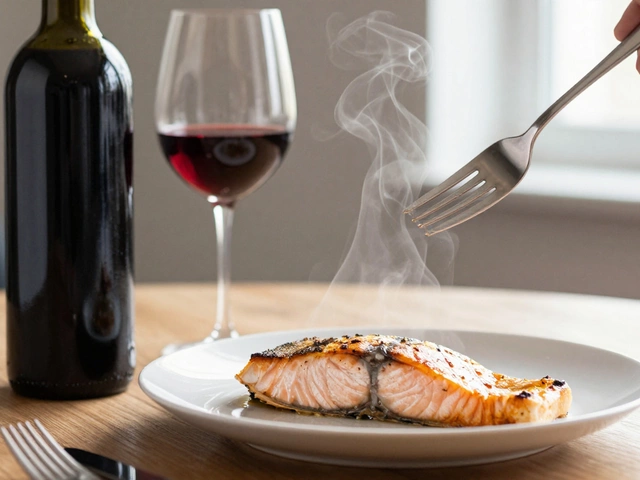French Red Wine: Varieties, Tasting Tips, and Perfect Pairings
If you love a good glass of red, the French bring a world of flavors to the table. From the powerful Cabernet‑based blends of Bordeaux to the silky Pinot Noir of Burgundy, French reds are known for balance, depth, and a sense of place. This guide gives you the basics you need to pick, sip, and pair these wines without feeling overwhelmed.
Key French Red Wine Varieties
First, let’s break down the most common grapes you’ll meet. Bordeaux blends typically mix Cabernet Sauvignon, Merlot, Cabernet Franc, Petit Verdot, and sometimes Malbec. The result is a wine that can be tanned, fruity, or earthy depending on the region and age. Pinot Noir dominates Burgundy’s red scene. It’s lighter in body, with bright cherry and forest floor notes, and it shows the terroir—soil and climate—more clearly than any other grape. Grenache and Syrah rule the southern Rhône, creating bold, spicy wines like Châteauneuf‑du‑Pape. Finally, Gamay makes the fun, easy‑drinking Beaujolais, perfect for casual gatherings.
When you see a label, look for the region as a shortcut. Bordeaux, Burgundy, Rhône, and Languedoc each have distinct styles. A Bordeaux will feel structured, a Burgundy will feel elegant, a Rhône will feel peppery, and a Languedoc will feel fruit‑forward. Knowing this helps you choose a wine that matches your mood or meal.
How to Taste and Pair French Reds
Start by pouring a small amount—about a half‑glass—into a clear glass. Hold the glass by the stem, give it a gentle swirl, and sniff. You should catch aromas of fruit, spice, or earth. Take a sip and let the wine coat your tongue. Notice the balance between acidity, tannin, and alcohol. A well‑made French red will feel smooth, not harsh, and it will have a finish that lingers for a few seconds.
Now, match the wine to food. A robust Cabernet‑based Bordeaux loves red meat, hearty stews, and strong cheeses like aged cheddar. Burgundy’s Pinot Noir shines with roasted chicken, salmon, or mushroom dishes. Rhône blends pair nicely with grilled lamb, ratatouille, or dishes that have a hint of herbs and garlic. Beaujolais works well with charcuterie, soft cheeses, and even spicy Asian food because its low tannins won’t clash with heat.
Temperature matters, too. Serve most French reds a bit cooler than room temperature—around 60‑65°F (15‑18°C). This keeps the alcohol from overwhelming the flavors and helps the fruit stay fresh. If the wine feels too warm, pop it in the fridge for 15 minutes.
Finally, don’t be scared to experiment. French red wines age well, so an older Bordeaux can taste very different from a young one. Try a bottle from a good vintage and compare it to a recent release. Notice how the fruit softens and the earthiness deepens over time. That experience will sharpen your palate faster than any textbook.
Bottom line: French red wines offer a range of styles that suit many occasions. Remember the key varieties, taste with curiosity, and pair based on the wine’s weight and flavor. With these simple steps, you’ll feel confident choosing a French red that makes any meal—or solo glass—feel special.
Discover what makes French wine legendary, explore the best reds and whites, and learn tips for pairing and tasting. Find your ideal wine for every mood and moment in France.
View Details

